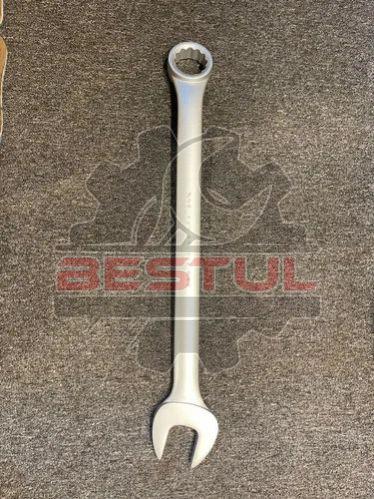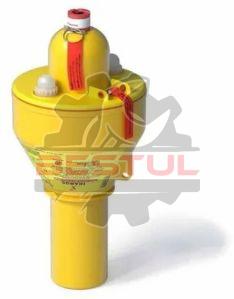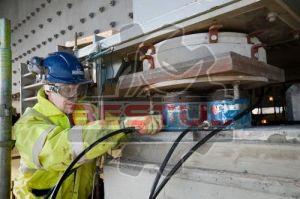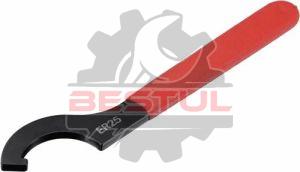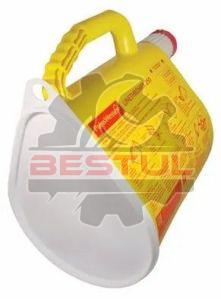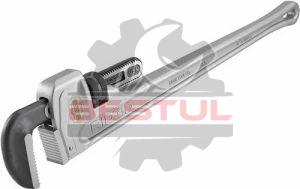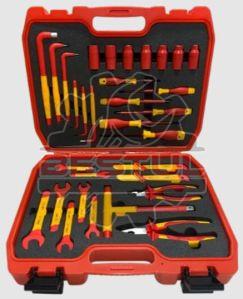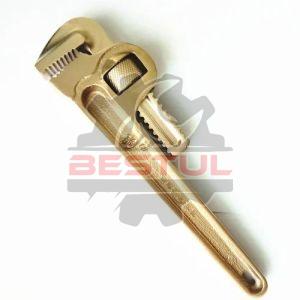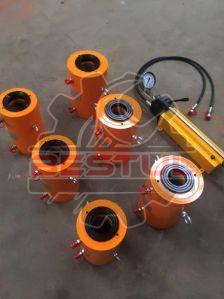sales@besthardware.in - GST NO. : 27AECPT4419C1ZN
| Business Type | Exporter, Supplier |
| Type Of Spanner | Combination Spanners |
| Packaging Type | Box |
| Material | Vanadium steel 31CRV3 |
| Click to view more | |
Preferred Buyer From
| Location | Worldwide |
Product Details
Industrial Combination SpannersDescription and Features
Overview: Industrial combination spanners, also known as combination wrenches, are versatile hand tools designed for tightening and loosening nuts and bolts. These wrenches feature a closed-end (box end) on one side and an open-end on the other, making them suitable for various applications in industrial, automotive, and mechanical settings.
Key Features:
1. Dual-End Design:
- Open-End: Allows for quick adjustments and access to fasteners in tight spaces.
- Box-End: Provides a secure grip on nuts and bolts, minimizing the risk of slipping and rounding off.
2. Material Construction:
- High-Strength Steel: Typically made from chrome vanadium or chrome molybdenum steel for durability and resistance to wear.
- Corrosion Resistance: Often finished with chrome plating to enhance corrosion resistance and maintain appearance.
3. Size Range:
- Available in a wide range of sizes, allowing for compatibility with various fasteners. Common sizes include metric and imperial measurements.
4. Design Features:
- Ergonomic Handle: Designed for comfort and ease of use, reducing hand fatigue during extended periods of work.
- Offset Box-End: Many models feature an offset design that provides better clearance and access in tight spaces.
5. Torque Capacity:
- Engineered to handle high torque applications, ensuring that they can withstand heavy use without deforming.
Detailed Information
1. Material Properties:
- Durability: Made from tough alloys that can withstand high-stress applications and resist deformation.
- Finish: The chrome finish not only adds to aesthetics but also protects against rust and enhances grip.
2. Design Variations:
- Ratcheting Box Ends: Some combination spanners come with a ratcheting mechanism in the box end, allowing for quicker tightening and loosening without removing the tool from the fastener.
- Thin-Walled Design: Thin-walled options are available for accessing fasteners in confined spaces.
3. Safety and Compliance:
- Industry Standards: Often comply with standards such as ANSI and DIN, ensuring reliability and performance in industrial applications.
4. Advantages:
- Versatility: Suitable for a wide range of tasks, from automotive repairs to heavy machinery maintenance.
- Easy Storage: Typically designed to fit in standard toolboxes or pegboards for easy organization.
- Reduced Risk of Damage: The box end reduces the risk of rounding off fasteners compared to open-end designs.
5. Maintenance Tips:
- Cleaning: Wipe down the spanner after use to remove dirt and grease, which can lead to corrosion.
- Inspection: Regularly check for signs of wear or damage, such as cracks or bent shapes, to ensure safety and performance.
6. Usage Tips:
- Correct Size Selection: Always use the right size wrench for the fastener to avoid slipping and damaging the nut or bolt.
- Proper Technique: Apply consistent pressure when loosening or tightening to prevent tool slippage.
- Avoid Over-Tightening: Be cautious not to over-tighten fasteners, as this can lead to damage.

